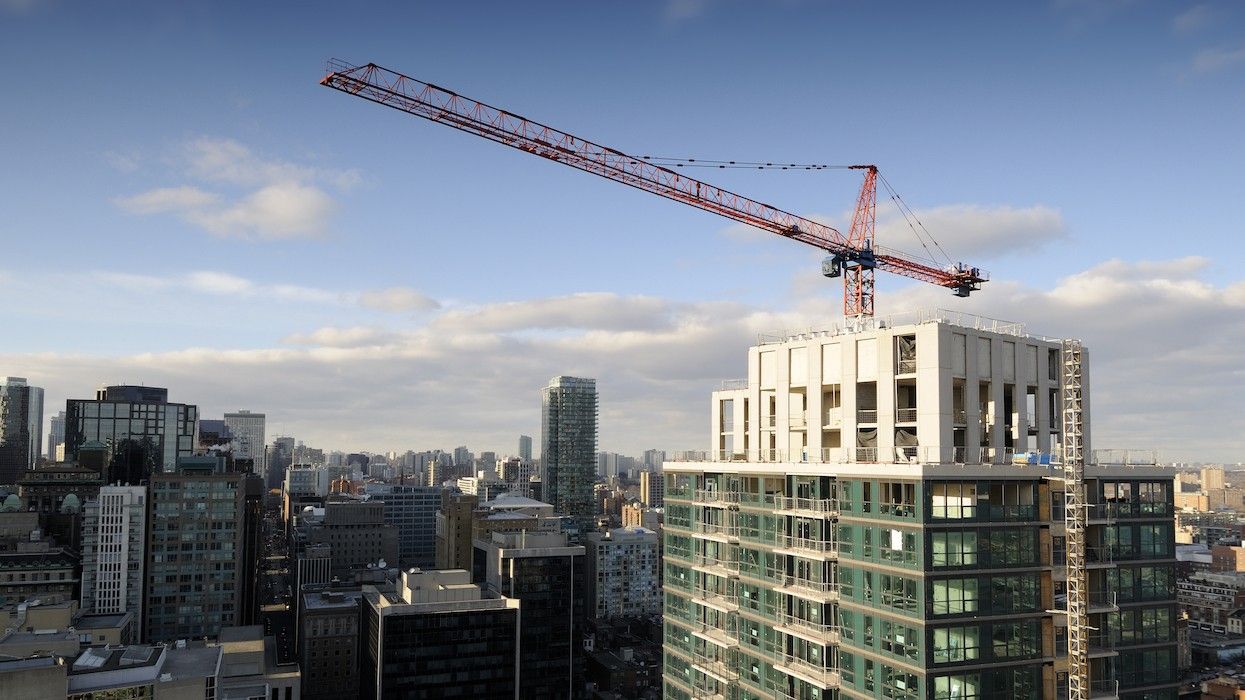Canadian homebuilding started the year on a sluggish note, with housing starts slipping 10% between December and January. But February more than made up for that decline.
According to figures put out Friday by Canada Mortgage and Housing Corporation (CMHC), starts for all areas across the country shot up 14% last month (on a seasonally adjusted basis) with 253,468 units breaking ground.
This helped to prop up the six-month trend in starts to 245,665 units in February, translating to a slight 0.4% gain on a month-over-month basis.
CMHC also reported that starts across urban centres — characterized as those with populations of at least 10,000 — saw an annual rise of 11% to 17,495 units in February. The year-over-year increase was driven “solely” by higher multi-unit starts, which were up 16%, said CMHC. Meanwhile, single-detached starts fell 14% in the month
“February’s actual housing starts were 10% and 82% higher year over year in Toronto and Vancouver, respectively, because of higher multi-unit starts, while single-detached starts decreased. Montreal’s actual starts decreased 9%, as both housing segments were lower,” the government agency also revealed.
Considering the tepid starts activity reported in the month prior, some economists have indicated that February’s reading is encouraging, with TD’s Rishi Sondhi calling it a “bounce back” and Desjardins’ Kari Norman saying that the numbers are proof that the Canadian housing market “continues to forge ahead.” However, Right at Home Realty President John Lusink urges Canadians to keep expectations at bay; he worries that February’s figures give a “false” sense of the state of the country’s homebuilding sector.
“We are just so far short of being able to satisfy real demand,” Lusink tells STOREYS. He adds that February’s reading may have more to do with the weather — which has been unusually conducive to construction — than the health or heartiness of the building sector.
“I also think there's also been quite a catch-up leftover from COVID when there were months of supply chain issues and delays,” Lusink says. “Condos especially have been boosted by the whole investor segment on the pre-con side.”
Meanwhile, on the low-rise side, Lusink reckons the slide in starts has a lot to do with affordability (or lack thereof) and the remarkably sluggish year we've just had for home sales.
“I think developers who had projects on the books and were ready to go, as they began to see these numbers dwindling — and of course, buyers backing out and not being able to qualify — they pulled developments off the market,” he says. “And then, of course, we’ve unfortunately had some pretty significant builders claim bankruptcy. So, overall, it's been a rough haul for the builders.”
And Lusink fears that there's more toughness to come: “Until builders can find ways to bring their product to market without incurring such significant costs, supply is going to be really challenged in low-rise residential especially.”





















